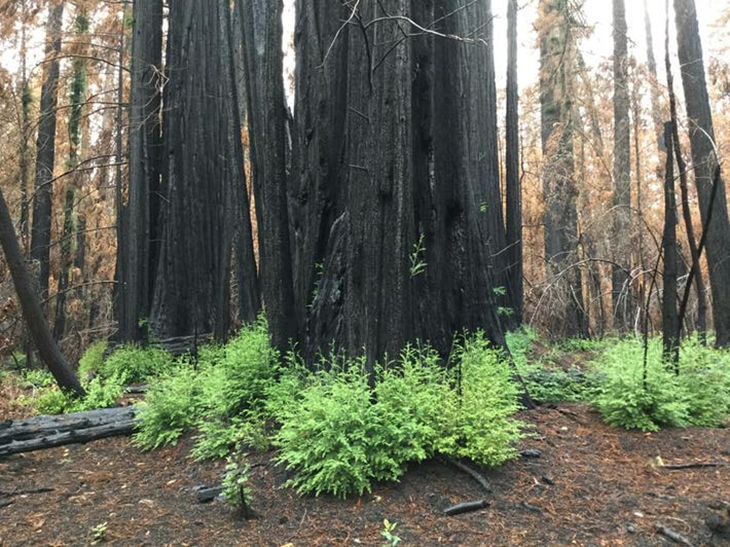
Following a destructive fire triggered by a lightning strike in California’s Big Basin Redwoods State Park amid the initial years of a recent drought, concerns arose about the potential irreparable damage to the iconic redwoods. Scientists, acknowledging the trees’ millions of years of evolution in adapting to fire, remained cautiously optimistic.
Despite the protective shroud of their thick, shaggy bark, functioning like a firefighter’s coat, the flames ascended vigorously to the very crowns of these ancient giants. Every needle on their towering frames succumbed to the scorching blaze, instigating genuine fears among scientists that the redwoods might face an insurmountable setback.
However, defying the grim expectations, these resilient giants revealed a remarkable strategy for survival. Tapping into deep reserves of energy stored in their extensive root systems, the redwoods initiated a remarkable resurgence just weeks after being charred by the intense fire. The saga of the California redwoods, once on the brink of despair, unfolded as a testament to their extraordinary ability to endure and regenerate even in the face of seemingly catastrophic events.
“It was shocking,” Drew Peltier, a tree ecophysiologist at Northern Arizona University, said when speaking to Science Magazine. “It really seemed like most of the trees were going to die.”
Despite their thin appearance, the pine needles of redwood trees possess the essential components for photosynthesis. When a fire consumed these needles, it raised questions about how the redwood tree would sustain itself without the means for photosynthesis. However, a recent paper authored by Peltier and colleagues reveals a remarkable phenomenon: dormant buds, concealed beneath the tree’s bark for an extended period, were activated. Surprisingly, sugars produced through photosynthesis decades ago were utilized to propel these buds into the sunlight.
The study not only brings a positive headline about the recovery of ancient trees in Big Basin, some exceeding 2,000 years in age but also introduces a captivating revelation that reshapes our perception of these slow, enduring arboreal companions.
Melissa Enright from the US Forest Service conducted an experiment by using black plastic bags to obstruct sunlight from reaching emerging shoots on some of the charred trees. Despite this intervention, the shoots continued to grow, eventually transforming into small pine boughs. Subsequently, researchers, including Peltier, employed radiocarbon dating to determine the age of the sugars within these boughs.
The findings have been astonishing, revealing an average sugar molecule age of 21 years. This implies that the tree has utilized energy generated over two decades ago as fuel for its new growth. Further analysis of individual carbon molecules in the sugars unveiled some components that were three times older than the average.
Peltier emphasizes that these discoveries challenge conventional notions of tree metabolism and instill hope that older trees on our planet can withstand the threats posed by fires and other hazards, potentially exacerbated by a changing climate. The revelation provides a glimpse into the resilience of ancient trees, encouraging a reconsideration of their adaptability and survival strategies.


